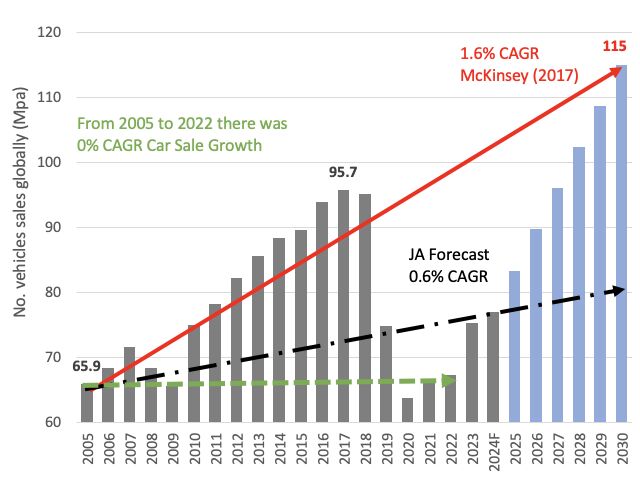Updated actual and projected global car sales out to 2030. Most don’t realise that global vehicle sales actually peaked in 2017 and have subsequently declined >21%. In fact, global unit purchases in 2005 and 2022 were largely identical, some 17 years apart. The reason(s) why this decline in demand transpired are synchronous, commencing before the EV transition, which has subsequently compounded the overall trend.
The key influences include (i) car price cost inflation outpacing incomes, incentivising consumers to retain existing vehicle stock; (ii) the arrival, and the subsequent cost of EVs, over and above their internal combustion equivalents, which we believe is structural; and (iii) the trend of younger generations to eschew traditional vehicular ownership, instead, adopting micro-mobility measures and auto App platforms for intermittent transport usage.
Collectively, all these trends represent a paradigm shift from vehicular ownership, to vehicle usage.
We included the McKinsey 2017 forecast trajectory through to 2030 not as a criticism, because at the time, it was heavily pilloried for being too conservative, not adequately accounting for expected growth from the Chinese and Indian markets. But, to quote Yogi Berra — “It’s tough to make predictions, especially about the future”.

